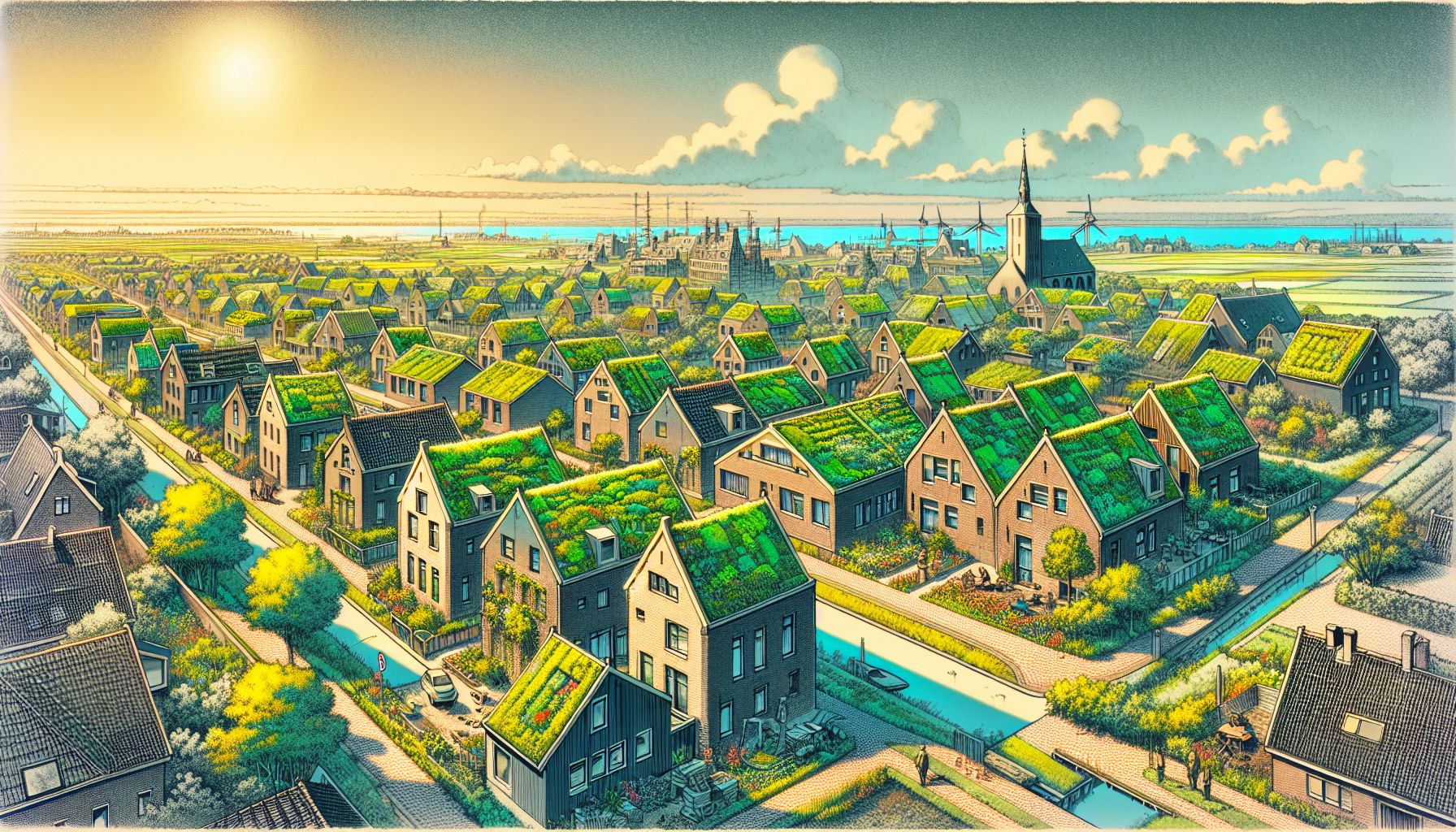Dutch Town Unveils Innovative Green Roof Subsidy to Combat Climate Change

Land van Cuijk, Thursday, 27 June 2024.
Land van Cuijk introduces a subsidy scheme for green roofs, offering up to €5,000 per application. The initiative aims to mitigate climate impacts, improve energy efficiency, and enhance urban aesthetics, demonstrating a local commitment to sustainability.
The Benefits of Green Roofs
Green roofs provide numerous advantages for both the environment and the residents of Land van Cuijk. These roofs, covered with vegetation, offer natural insulation, keeping homes cooler in the summer and warmer in the winter. This results in significant energy savings and improved comfort for inhabitants. Additionally, green roofs have a longer lifespan compared to traditional roofing materials because they protect the underlying roof from ultraviolet radiation and extreme weather conditions. Furthermore, green roofs help manage stormwater runoff by absorbing rainwater, thereby reducing the burden on the city’s drainage systems and mitigating flood risks.
Encouraging Sustainability
The municipality of Land van Cuijk is actively promoting the adoption of green roofs through a generous subsidy scheme. Residents, businesses, and associations can apply for a subsidy of up to €5,000, with a maximum of €15 per square meter of green roof installed. This financial incentive makes the installation of green roofs more accessible and attractive, encouraging widespread participation in the initiative. The scheme is part of a broader effort by the municipality to create greener urban spaces, which includes transforming gardens, schoolyards, and business parks.
A Broader European Trend
The initiative in Land van Cuijk is aligned with broader European efforts to combat climate change through innovative green policies. The European Green Deal aims to make the EU climate-neutral by 2050, with significant investments in green technologies and infrastructure. According to the European Environment Agency, achieving these goals requires an annual increase of approximately EUR 520 billion in green investments. Such initiatives are essential to meet the ambitious climate targets set for 2030 and beyond, including reducing greenhouse gas emissions and enhancing biodiversity.
Comparing Global Efforts
Similar green roof projects are being implemented worldwide. For instance, in Brooklyn, New York, the Kingsland Wildflower Green Roof serves as a model for climate-resilient infrastructure. This project not only beautifies the urban environment but also plays a critical role in managing stormwater, thereby reducing sewage overflow into local waterways. The success of such initiatives underscores the importance of green infrastructure in urban planning and its potential to address environmental challenges effectively.
Future Prospects
As climate change continues to pose significant challenges, the adoption of green roofs and other sustainable practices will likely become more prevalent. The subsidy scheme in Land van Cuijk is a testament to the municipality’s proactive approach to sustainability. By making green roofs more accessible, the town is not only enhancing its resilience to climate impacts but also setting a positive example for other communities to follow. With continued support and investment, green roofs could play a crucial role in the global effort to combat climate change and create more sustainable urban environments.

